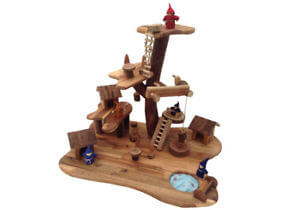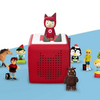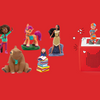How to choose the best educational toy for your child?

Toys and child development
The role of play and toys in the child's psycho-physical development is enormous. Parents should enjoy when their child spends a lot of time. Some parents buy children a huge amount of the most-loved toys, while others think that spending on toys is throwing money, and the fun itself is a waste of time.
Both of these extreme attitudes are unsuitable, because if a child has too many toys, especially maladjusted to his age and interests, he either does not play at all, or spoils them and does not respect them, he can not enjoy them either. However, the lack of toys is an irreparable emotional loss in his psyche, because it deprives the child of the joy of life, he harms them and impairs his psychological and physical development. Childhood is the time to play (both in humans and animals). If a child is deprived of toys and play, childhood is taken away from him.
Development period
The most important thing is choosing a toy for the development period in which the child is. Toys do not have to be expensive, fashionable and please parents. Instead, they have to please their child and they must be interested, and having fun with them must give him pleasure and joy.
Infants
Infants are just hung a colorful balloon suspended above the crib, plastic colored toys, circles, and rattling sounds. The point is that the younger baby could follow them with the eyes, and the older ones grab them with their hands, shake, manipulate, translate from the handle to the handle. In this way, the child exercises, among others visual-motor coordination and hand manipulation. He also learns to distinguish colors.
Annual child
The annual child is happy to play with plastic boxes and mugs of various sizes and colors, putting one into the other, as well as rubber dolls and animals. Because the child still takes toys to the mouth during this period, they should be made of non-toxic materials and those that can be easily washed and kept clean. In the second year of life, when children go alone, they love prams and cars that can pull on a string. And a bit later, when you're probably walking, toys mounted on a stick, on wheels that push in front of you, eg ducks moving their beaks, wings spreading wings, rotating fans, etc.
Two-three-year-old
Two-three-year-old children like teddy bears, dolls and all cuddly toy mascots, and colorful blocks, which are a toy that develops mentally. These can be used to build various buildings and structures. This has a positive effect on the development of children's imagination and other important mental functions. In this age, accessories for playing in the sand, on the plot and in the garden are also necessary - buckets, blades, molds, watering cans. We try, however, not to give children trumpets, clarinets and whistles, because they are unhygienic and noisy.
Four-year-olds
Four-year-olds are more and more physically fit, which is why they are happy to ride three-wheeled bikes. At this age children are also beginning to imitate adults. That is the reason why we buy them toys that depict everyday items - furniture, glasses, kitchen equipment, dollies and dolls, washing machines, cookers, scales, hammers, simple DIY tools. From such toys children are very happy, because it makes their games more attractive. They have the same things as mum and dad, only in miniature.
Thematic time
Then there is the thematic time, during which the children play in POLICE, SELLER, TEACHER, HAIRDRESSER, DOCTOR, DRIVER etc. Such fun is greatly facilitated by sets of toys for thematic games, which can be bought in toy stores, such as "a small hairdresser", "small doctor" etc.
As children grow older, they change their character. Simple manipulative movements of an infant gradually transform into more and more complicated motor activities and construction games. For each of these stages, the child needs other toys, as well as pencils, paints, plasticine, books.
Children should be approached with seriousness and understanding to play the child, not to give him encouragement, admiration, interest and praise. And if he asks us to have fun together, let's not forget the lack of time and fatigue.
All the best,
Amousewithahouse




